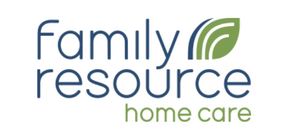Twice a month I teach a class to new Family Resource Home Care caregivers. Typically the class will consist of six to twelve new hires, more women than men, with a very diverse mix of ethnic and national backgrounds. A large percentage of our caregivers are recent immigrants from Kenya, Gambia, Philippines, Ethiopia, and Mexico. I don’t look like most of my students. I appear pretty much what you would expect a 60 year-old Caucasian native born American male to appear. I do mention to the class that I may not look it but I’m ½ first generation American myself.
I grew up with stories about my mother arriving in New York City in 1938 as a teenage refugee from Hitler’s Germany. Amid her stories of poverty, hard work and struggle, one of her most powerful memories was of the strangeness of it all, of feeling different, of being look upon as not “one of us.” She felt like a stranger in a strange land. She wore wool stockings while American girls wore silk. Her English was limited and she was ignorant of American manners and customs. Her name, Gerda Ehrenberg, marked her as foreign; someone “not from here.” I remember her talking about an instructor in an English language class who urged her immigrant students to shed their differences and become more “American.” My mother was a quick learner; she studied, worked hard, and succeeded. She was accepted, though not without struggle.
Fast forward to today. Grace Adoma, one of our marvelous Seattle Home Care caregivers, is also a new immigrant to America. She came from Ghana in 2004 at the age of 37. She spoke some English but that wasn’t enough when, after arriving at the airport, she could not find her luggage. She asked for help but no one understood what she was saying. Ultimately she found someone who could understand her and her luggage was found. Over the next few months as Grace acclimated to her new home, she found that people were very caring and accepting of her ― no one seemed to think she should change herself to become more “American.” “This is a free country” she says and “we can be who we are.”
It’s not hard at all to look at my class and see my mother’s English class of 75 years ago. The skin color is different. The assimilating culture is no longer predominantly European. And these immigrants, Seattle’s newest caregivers, are not being told to shed that which makes them unique and special. Yet so much is the same. What a privilege it is to be part of one of the most American of traditions – welcoming our new arrivals and knowing their caring, drive and ambition will make a better country for all of us.





